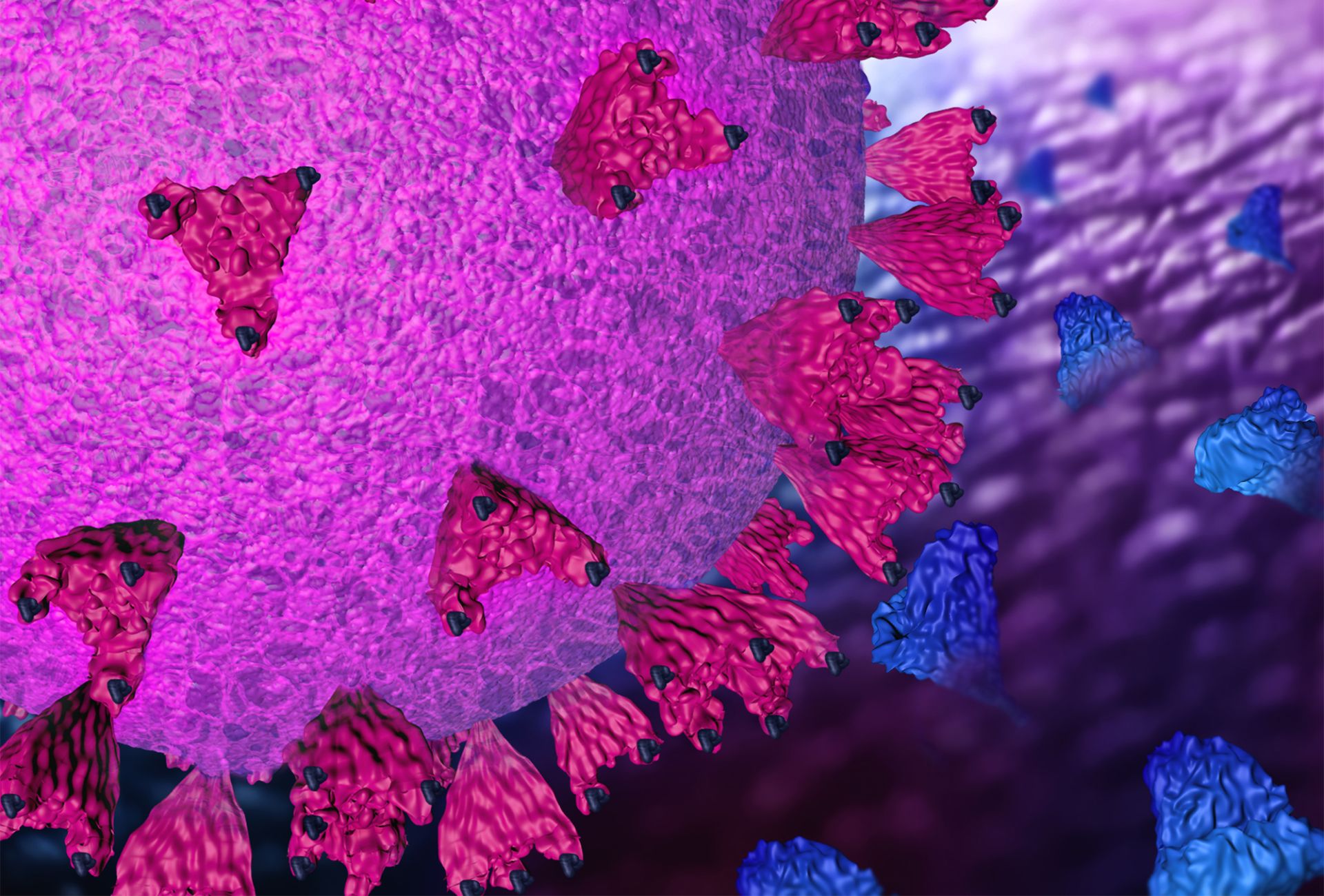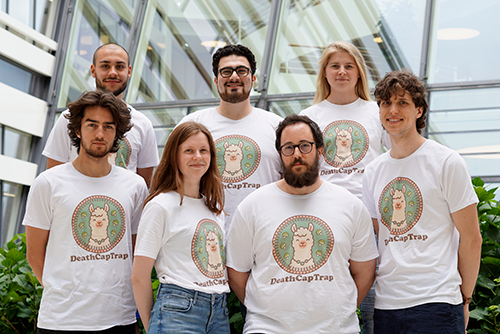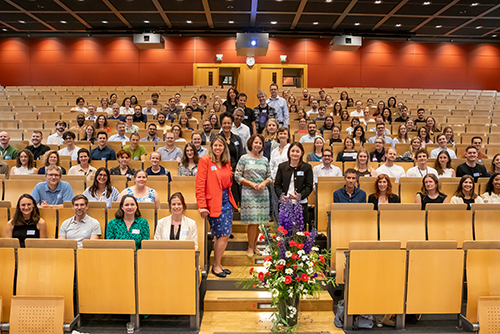Scientists identify sybodies to combat COVID-19
By screening hundreds of sybodies, a group of scientists has identified one that might stop SARS-CoV-2 from infecting human cells.
CSSB scientists Christian Löw and Martin Hällberg and their collaborators have identified sybodies with the potential to neutralise the coronavirus SARS-CoV-2. Their work, published in Nature Communications, holds promise for treating COVID-19.

Viral spike proteins cover the surface of SARS-CoV-2 giving the virus its halo- or solar corona-like appearance. To infect human cells, the spike protein uses its three finger-like protrusions, called the receptor binding domains (RBDs), to bind to the human surface protein ACE2. Once bound together, the viral membrane fuses with the host cell membrane thus facilitating host cell entry. Identifying specific antibodies which prevent the RBDs from binding to the host cell could potentially halt the progression of SARS-CoV-2.
Nanobodies, small antibodies found in llamas or camels, are often used in therapeutics however obtaining them from these animals is often quite time consuming. Technological advances now allow for the generation of synthetically created nanobodies, called sybodies, which are not only small but also extremely stable and relatively simple to produce. A technology platform for selecting sybodies from large synthetic libraries has recently been developed by Markus Seeger’s group at the University of Zurich.
The Löw group used this platform to search for sybodies that could block SARS-CoV-2 from infecting human cells. The viral spike protein’s RBDs were first used as bait to select those sybodies that were most likely to bind to them. The scientists then tested the selected sybodies to determine their stability and effectiveness as well as the precision with which they bind the RBDs. One sybody in particular, sybody 23, turned out to be exceedingly effective in blocking the RBDs.
To learn exactly how sybody 23 interacts with the viral RBDs, researchers in the groups of Dmitri Svergun at EMBL Hamburg analysed the binding of Sybody 23 to the RBD by small-angle X-ray scattering. Furthermore, Martin Hällberg at the CSSB and Karolinska Institutet determined the structure of the full SARS-CoV-2 spike bound to Sybody 23 using Cryo-EM. The RBDs switch between two positions: in the ‘up’ position the RBDs poke out, ready to bind ACE2; in the ‘down’ position they are furled to hide from the human immune system. The molecular structures, revealed that sybody 23 binds RBDs in both ‘up’ and ‘down’ positions, and blocks the areas where ACE2 would normally bind. This ability to block RBDs regardless of their position might explain why sybody 23 is so effective.
Finally, to test if sybody 23 can neutralise a virus, the group of Ben Murrell at Karolinska Institutet used a modified lentivirus which carried SARS-CoV-2's spike protein on its surface. Murrell observed that sybody 23 successfully disabled the modified virus in vitro.
“The collaborative spirit has been enormous in these times, and everybody was motivated to contribute,” says Christian Löw “Our results are quite promising and we will now focus on performing further analyses to confirm whether sybody 23 can effectively stop SARS-CoV-2 in the human body.”
Reference:
Custódio TF, Das H, Sheward DJ, Hanke L, Pazicky S, Pieprzyk J, Sorgenfrei M, Schroer M, Gruzinov A, Jeffries C, Graewert M, Svergun D, Dobrev N, Remans K, Seeger MA, McInerney GM, Murrell B, Hällberg MB, Löw C (2020) Selection, biophysical and structural analysis of synthetic nanobodies that effectively neutralize SARS-CoV-2. Nat Commun.
Press Release EMBL:
https://www.embl.org/news/science/sybody-against-sars-cov-2/



